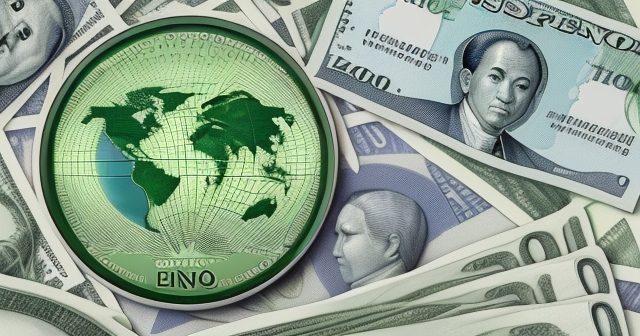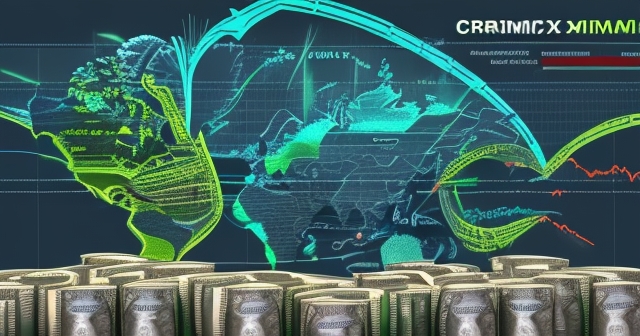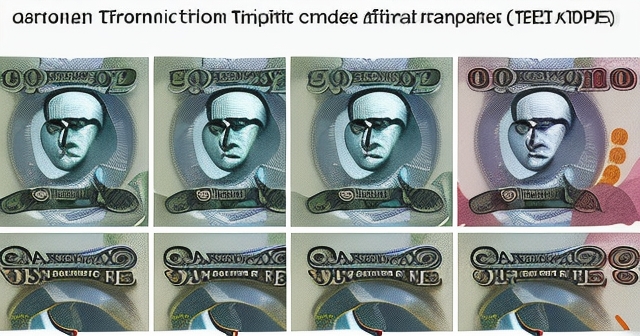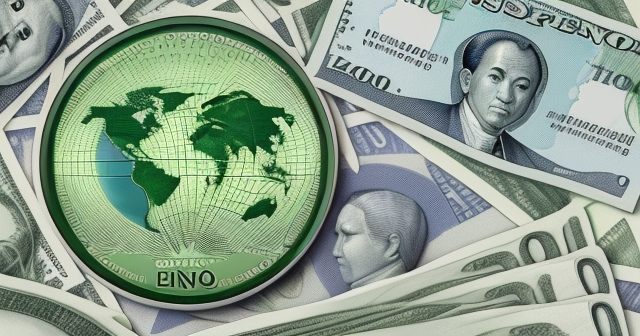Understanding the Greenback’s Influence: How US Trade Woes Strengthen the Philippine Peso and Reshape Local Economics
In the complex world of global finance, currencies are constantly in motion, reacting to economic data, political shifts, and international trade dynamics. Recently, we’ve witnessed a significant development in the foreign exchange market involving two key currencies: the US Dollar, often known as the Greenback, and the Philippine Peso. This isn’t just abstract financial news; it has tangible effects on economies and creates both opportunities and challenges for those involved in trading.
For investors and traders, understanding the forces driving these currency movements is fundamental, arguably even before diving deep into technical chart patterns. Why? Because fundamental factors like economic policy, inflation, and central bank actions often provide the underlying momentum that technical analysis seeks to track and predict. In this article, we will explore the recent performance of the Philippine Peso against the US Dollar, delve into the reasons behind the Greenback’s vulnerability, and examine the profound implications for the Philippine economy, including inflation and monetary policy. We’ll also touch upon why staying informed on these macroeconomic shifts is vital for your trading journey.

The past few months have marked a notable shift in the performance of the Philippine Peso (PHP) relative to the US dollar. We’ve seen the Peso achieve a significant milestone, climbing to levels not seen in over seven months. Specifically, the Peso has appreciated strongly, breaking into the 55-level territory against the Greenback.
- Understanding currency fluctuations is essential for trading.
- The relationship between the Philippine Peso and the US Dollar is indicative of global economic trends.
- Macroeconomic factors heavily influence exchange rates.
Think of it like a tug-of-war. For a while, the US dollar side was dominant, pulling the exchange rate higher (meaning it took more Pesos to buy one dollar). But recently, the Peso side has gained strength, pulling the rate lower. The data highlights this shift clearly. The Peso recently closed at 55.84 against the US dollar, marking a gain of 30.5 centavos in a single trading day. This performance was the Peso’s best showing since September 20, 2024, when it closed at 55.69. Furthermore, the local unit traded within the 55 territory for the first time since September 26, 2024 (closing at 55.965).
To put this into perspective, the Marcos administration had set a foreign exchange rate assumption of 56 to 58 for 2025. The Peso’s current strength, trading below this assumed range, demonstrates a significant deviation from initial expectations and reflects underlying economic forces at play. Why is this happening now, and what does it tell us about the global financial landscape?

While the Philippine Peso has been gaining ground, this isn’t happening in a vacuum. The Peso’s strength is occurring precisely as the US dollar itself is showing considerable weakness on a global scale. In fact, the rally in currencies like the Peso coincides with the Greenback’s worst start to any year since 1989. This historical context underscores the magnitude of the current shift in dollar sentiment.
So, what is contributing to this vulnerability in the world’s reserve currency? A key factor identified is the uncertainty stemming from US President Donald Trump’s trade war and tariffs. Trade wars, by their nature, disrupt established economic relationships. When a major economy like the United States imposes tariffs on imports or threatens to do so, it creates ripple effects across global supply chains and international trade flows. This uncertainty makes investors hesitant, sometimes leading them to move capital out of assets perceived as risky, including the currency of the country initiating the trade action.
Furthermore, protectionist trade policies can potentially slow down global economic growth, which in turn can dampen demand for the dollar as a safe-haven currency or as the primary currency for international trade transactions. The market perceives the potential negative consequences of these trade tensions on the US economy itself, which weakens confidence in the Greenback. It’s a complex interplay where political actions directly translate into market sentiment and currency valuations.

One of the most direct and beneficial impacts of an appreciating currency like the Philippine Peso is on domestic inflation. Inflation is the rate at which the general price level of goods and services is rising, and subsequently, the purchasing power of currency is falling. Controlling inflation is a primary objective for any central bank.
| Factor | Impact |
|---|---|
| Strengthened Peso | Lowers import costs |
| Tame inflation | Greater price stability |
| Foreign exchange rate | Greater economic flexibility |
How does a stronger Peso help achieve this? The Philippines is a net importer of many goods, including crucial commodities like oil and raw materials. When the Peso is strong against the US dollar (the currency often used for international trade), it means that Philippine businesses and consumers need fewer Pesos to buy the same amount of imported goods. This reduces the cost of imports.
Lower import costs feed directly into lower prices for goods and services sold domestically, or at least help prevent them from rising rapidly. This is particularly impactful for items like fuel and raw materials used in manufacturing, which affect a wide range of prices in the economy. The Bangko Sentral ng Pilipinas (BSP), the country’s central bank, explicitly states that Peso appreciation contributed to the tame inflation outlook for April.
The BSP forecasts April inflation to be between 1.3% and 2.1%. If realized, this could represent the lowest inflation rate in over five years. This subdued inflation environment is a direct consequence, in part, of the Peso’s strength helping to absorb external price pressures.

For the central bank, the Bangko Sentral ng Pilipinas (BSP), managing inflation is a critical balancing act. They use monetary policy tools, primarily adjusting interest rates, to influence economic activity and price levels. When inflation is high or rising, central banks typically raise interest rates to cool down the economy by making borrowing more expensive, which in turn reduces demand and puts downward pressure on prices.
Conversely, when inflation is low and stable, and the economy needs a boost, central banks can consider cutting interest rates. Lower rates make borrowing cheaper, encouraging businesses to invest and consumers to spend, thereby stimulating economic growth. This is where the strong Peso and the resulting tame inflation provide the BSP with significant policy space.
| Monetary Policy Tools | Purpose |
|---|---|
| Interest Rate Adjustments | Influence economic activity |
| Policy Communication | Manage market expectations |
| Liquidity Management | Ensure financial stability |
Because inflation is within or even below the government’s target range (which the Peso’s strength helps maintain), the BSP is not under immediate pressure to keep interest rates high solely to fight inflation. This creates the flexibility for them to potentially cut interest rates in the future if they deem it necessary to support economic growth and employment. The BSP’s Monetary Board has indicated that it will maintain a measured approach to monetary policy adjustments, carefully balancing price stability with sustainable growth. The current low inflation environment, partly enabled by the strong Peso, gives them more room to maneuver should economic conditions warrant a stimulus.
While the strength of the Philippine Peso is a significant factor contributing to the tame inflation outlook, it is important to recognize that inflation is influenced by a multitude of variables. The data provided acknowledges this complexity, mentioning that other factors also affect inflation, such as higher electricity rates and increased fares for the LRT-1 train line.
| Other Influencing Factors | Impact on Inflation |
|---|---|
| Electricity Rates | Higher costs for businesses |
| Transport Fares | Increased cost of living |
| Commodity Prices | Impact on inflation rates |
These are examples of specific price increases in key sectors of the economy that would, in isolation, put upward pressure on the overall Consumer Price Index (CPI), the measure used to track inflation. Electricity is a fundamental input cost for businesses and a significant expense for households. Public transportation fares directly impact commuters’ budgets. Increases in these areas can have a noticeable effect on the cost of living.
However, the fact that the overall inflation forecast remains low despite these specific price hikes underscores the powerful disinflationary effect of the stronger Peso. It highlights how the benefits of cheaper imports are currently outweighing or significantly mitigating the inflationary impact of rising domestic service costs. This complex interplay of factors is what central bankers and economists constantly monitor when assessing the inflation landscape.

The narrative of the Philippine Peso’s recent strength against a weakened US dollar is a compelling illustration of how interconnected global financial markets truly are. It shows us that events seemingly originating far away, like trade policy decisions in the United States, can have direct and measurable consequences on currency valuations and economic conditions in countries like the Philippines.
For anyone engaged in or considering foreign exchange trading, this interconnectedness is a fundamental concept to grasp. Currency pairs are not static; they are dynamic reflections of the economic and political forces acting upon both countries involved in the pair. Understanding these fundamental drivers – whether it’s central bank policy, inflation data, or international trade tensions – is crucial for making informed decisions.
Ignoring these macro-level factors while solely relying on technical indicators might lead you to miss the underlying currents that are providing the primary momentum for price movements. The Greenback’s vulnerability due to trade uncertainty and the Peso’s subsequent appreciation demonstrate that global events must always be on your radar when trading any currency pair.
You might be drawn to trading by the excitement of charts, indicators, and predicting price movements based on patterns. Technical analysis is undoubtedly a powerful tool in a trader’s arsenal, helping you identify potential entry and exit points, gauge momentum, and manage risk. However, solely focusing on charts without understanding the fundamental forces driving price action is like navigating a ship by looking only at the compass without considering the wind and currents.
Fundamental analysis, which is what we’ve been discussing regarding the Peso, Greenback, inflation, and monetary policy, provides the “why” behind the movements you see on your charts. Why is the USD/PHP pair moving lower? Because the Greenback is fundamentally weakening due to trade uncertainty, and the Peso is strengthening due to factors like its impact on inflation and the resulting central bank flexibility. This fundamental understanding gives you conviction in your trades; it helps you discern whether a chart pattern is likely to follow through or if there’s a strong underlying force pushing against it.
Combining fundamental and technical analysis allows for a more robust trading strategy. You can use fundamental analysis to identify currency pairs that are likely to experience significant moves based on economic or political factors, and then use technical analysis to time your entries and exits precisely. For new traders, building a strong foundation in understanding these fundamental drivers is just as crucial as learning chart patterns.
Trading currency pairs like USD/PHP involves more than just watching the exchange rate fluctuate. You need to be aware of the key economic releases and events that can trigger volatility. For the USD/PHP pair, this includes US economic data (like inflation, employment reports, Federal Reserve announcements) and Philippine economic data (like CPI, GDP, and crucially, statements and decisions from the Bangko Sentral ng Pilipinas).
Monitoring news related to US trade policy, especially regarding tariffs and international relations, is also vital, as we’ve seen its direct impact on the Greenback. Central bank meetings are particularly important inflection points, as decisions on interest rates or changes in policy guidance can cause significant currency swings.
Successful currency trading also requires sound risk management. The leverage available in forex trading can amplify both gains and losses. It is crucial to use tools like stop-loss orders to limit potential downsides and to trade with a clear plan based on your analysis. Understanding the dynamics discussed here – the reasons behind currency strength or weakness – helps you assess the potential volatility and risk associated with a trade.
If you’re considering diving into the world of foreign exchange trading or exploring other CFD instruments, having access to a reliable and well-equipped platform is essential. Moneta Markets is a platform worth considering. Hailing from Australia, it offers access to over 1000 financial instruments, catering to both novice and experienced traders alike.
As you build your understanding of market fundamentals and hone your technical analysis skills, the tools and platform you use become increasingly important. A good trading platform provides you with real-time price data, charting tools, access to news and analysis, and the ability to execute trades efficiently and reliably. For currency traders, features like competitive spreads, fast execution speed, and access to different trading platforms (like MT4, MT5, or proprietary options) are key.
Beyond the trading interface itself, consider the support and resources offered by the broker. Do they provide educational materials? Is customer support readily available, perhaps even in your preferred language? Is your capital held securely, segregated from the company’s operating funds?
Selecting a platform that is regulated by reputable authorities provides an essential layer of security and trust. When choosing a trading platform, the flexibility and technological advantages offered by Moneta Markets are worth noting. It supports popular platforms such as MT4, MT5, and Pro Trader, and combines high-speed execution with competitive low spread settings to provide a potentially favorable trading experience.
Furthermore, if you are looking for a foreign exchange broker with regulatory assurance and global trading capability, Moneta Markets holds multi-country regulatory certifications including FSCA, ASIC, and FSA, and offers a comprehensive package including segregated client funds, free VPS services, and 24/7 Chinese language customer support, making it a preferred choice for many traders.
While the current situation sees the Philippine Peso strong and the Greenback weak due to specific fundamental drivers, financial markets are constantly evolving. Will the US trade tensions persist or escalate? How will future economic data from both the US and the Philippines influence the exchange rate? What will be the next steps for the Bangko Sentral ng Pilipinas regarding monetary policy, especially if global or domestic economic conditions change?
These are questions that require continuous monitoring and analysis. The strength of the Peso provides the Philippines with economic advantages, particularly in the fight against inflation, and offers the central bank valuable flexibility. However, this also means the economy is exposed to shifts in the external environment, particularly concerning the factors influencing the US dollar.
For traders, this dynamic environment presents opportunities but also necessitates vigilance. Staying informed about global economic news, central bank communications, and geopolitical developments is not just about intellectual curiosity; it’s a practical necessity for navigating the currency markets successfully. The skills you develop in understanding these fundamental drivers will serve you well, regardless of which currency pair you are trading.
In summary, the recent surge of the Philippine Peso to its strongest levels in over seven months is a direct consequence of the US dollar’s significant vulnerability. This weakness in the Greenback is largely attributed to the ongoing uncertainties generated by US trade policies and tariffs, marking its worst start to a year in decades.
For the Philippine economy, the strong Peso brings tangible benefits, primarily by helping to keep inflation tame through cheaper imports. This subdued inflation environment, also influenced by other factors like electricity rates and train fares, provides the Bangko Sentral ng Pilipinas with valuable monetary policy space, allowing them greater flexibility to consider interest rate adjustments to support economic growth, while maintaining their measured approach.
This situation underscores the profound interconnectedness of global events and local economies. For aspiring and experienced traders alike, understanding these fundamental drivers of currency movements is paramount. It complements technical analysis, providing essential context and contributing to more informed trading decisions in a dynamic and often unpredictable market landscape. As global dynamics continue to unfold, staying educated and adaptable remains the key to success in the world of currency trading.
greenback newsFAQ
Q:What factors are influencing the strength of the Philippine Peso?
A:Factors include trade policies, US economic data, and the overall market perception of the US dollar’s value.
Q:How does the strength of the Peso affect inflation?
A:A stronger Peso typically lowers import costs, helping to keep inflation rates in check.
Q:What should traders focus on when trading currency pairs?
A:Traders should consider both technical indicators and fundamental economic factors to make informed decisions.

留言